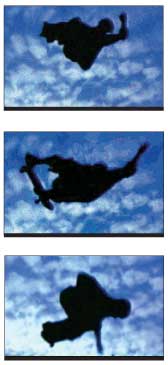|
|
Anti-Drug Ads For Thrill-Seekers Most Effectivedownloadable pdf
Expensive government advertising campaigns, which play an important part in the national drug strategy, do little, if anything, to dissuade teenagers from using drugs, according to a study by University of Florida researchers. The study, which used a new method to examine the influence of anti-drug advertising, showed that although certain types of messages were found to be effective in changing young adults' attitudes toward using illegal drugs, there are just as many being used that have no influence on teens' thoughts and behavior, said Jon Morris, a UF advertising professor who presented the findings at a Society of Biological Psychiatry conference in New York. Of four types of anti-drug messages currently in use, only one was found to have a significant effect on feelings against drug use. Messages that showed and were tailored to thrill-seeking teenagers, who are attracted to competitive and active behavior, were found to be the most effective at changing the feelings and intentions of young adults regarding drug use, Morris said. This type of ad was more effective than those conveying negative or threatening images, he said. The study also found that ads involving self-esteem and relationships with friends were related to feelings about drug use. Those that lowered self-esteem produced higher emotional responses toward drug use, while those displaying strong emotional bonds with friends lowered it, Morris said. Anti-drug ads are a major tool in the nation's anti-drug arsenal. In 1998, a Congressional act allocated $975 million to be spent between 1999 and 2002 to produce these messages, including television commercials, printed advertisements and billboards. Funds have since continued to be provided at a reduced level, with $150 million appropriated for the campaign last year. The transformational type features a narrator explaining why people should not use drugs. The ad researchers used showed a collection of great plays with Yankees baseball player Derek Jeter saying he wouldn't be able to perform such acts if he took drugs. Informational-type ads detail the physical consequences of taking drugs. The study used an ad showing a coroner reading the autopsy report of someone who died from a drug overdose. Provocative ads are designed to make a viewer think or to provoke emotion, such as the famous "This is your brain on drugs" commercial. Sensational ads, which researchers found to be the most effective, show people who seek excitement, possess a certain skill and are experiencing a physical sensation. The study ad illustrating this type showed a teenager performing daring moves on a skateboard and then indicating that if he took drugs, he would be unable to accomplish his skill. After being shown the four ads, participants filled out questionnaires in which they were asked to select a drawing that best represented their feelings about the ad. The pictorial representations measured on a nine-point scale various characteristics, such as pleasure, arousal and dominance. The researchers found the sensational ad impacted all nine of these characteristics and was the only type that influenced participants' behavioral intentions regarding drug use. The provocative ad affected all of the emotional dimensions but not behavior, while the transformational ad influenced a single emotion and the informational ad had no impact at all. Morris and his team plan to continue the research, focusing next on a large sample of middle school students, at whom most anti-drug messages are aimed because they are most at risk for trying drugs, he said Jon Morris, jmorris@jou.ufl.edu by Jessica Orr
|
